'We are really loyal': Johnston High class of '73 plans 50th reunion for East Austin school
The four women and three men sat on low couches and a chair in the school library.
One by one, they shared memories of their time at Albert Sidney Johnston High School during the late 1960s and early 1970s.
Without exception, they spoke of the labyrinthine East Austin campus, now operating as the Liberal Arts and Science Academy, which we had just toured, with ardent goodwill.
As their anecdotes unspooled, it became clear that Johnston, which opened in 1960 at a time when Austin's schools were slowly integrating, was a welcome educational opportunity.
For this group, Johnston also had been their refuge, their escape from a sometimes discordant world.
More: Julián Castro honors Willie Velasquez's 'transformative' activism in Texas Monthly tribute
They came here to read and study, to play sports and hang out with friends, to eat regular meals, to flirt and, in two of the seven cases, to find the loves of their lives.
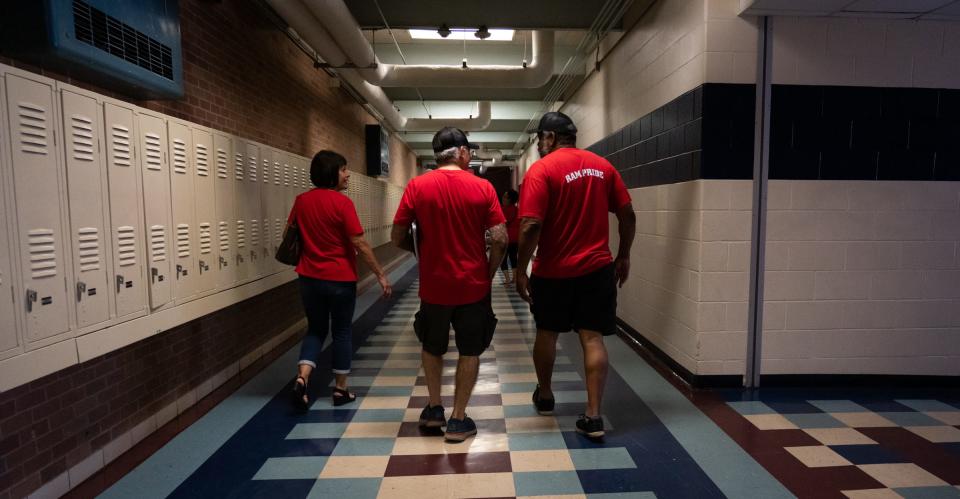
"Every day, I was the first to show up and the last to leave," said Steven Lewis, Class of 1973. "I'd come early to get breakfast. Whenever the gym was available, I'd hit the gym. I was a gym rat. I didn't want to go home."
Johnston High is no longer. In 2008, it was the first high school in Texas to be closed under a new state accountability system after test scores slowly declined. It was reconstituted for a while as Eastside Memorial at the Johnston Campus. Later, Eastside Early College High School moved to another campus.
Yet trophies, banners, yearbooks and other artifacts of the school that enrolled mainly Black and Mexican American students can be found all around the Liberal Arts and Science Academy that now fills the former Johnston's halls, classrooms, labs, gyms, library and offices.
On Oct. 14, the Johnston Class of ‘73 will hold a grand 50th reunion at Onion Creek Ballroom. Graduates from 1971 to 1973 will be welcome to join them and can email Johnstonramsclassof1973@gmail.com.
"I know everyone is loyal to their school," said Rodrick Brown, a classmate of Lewis'. "But we are really loyal."
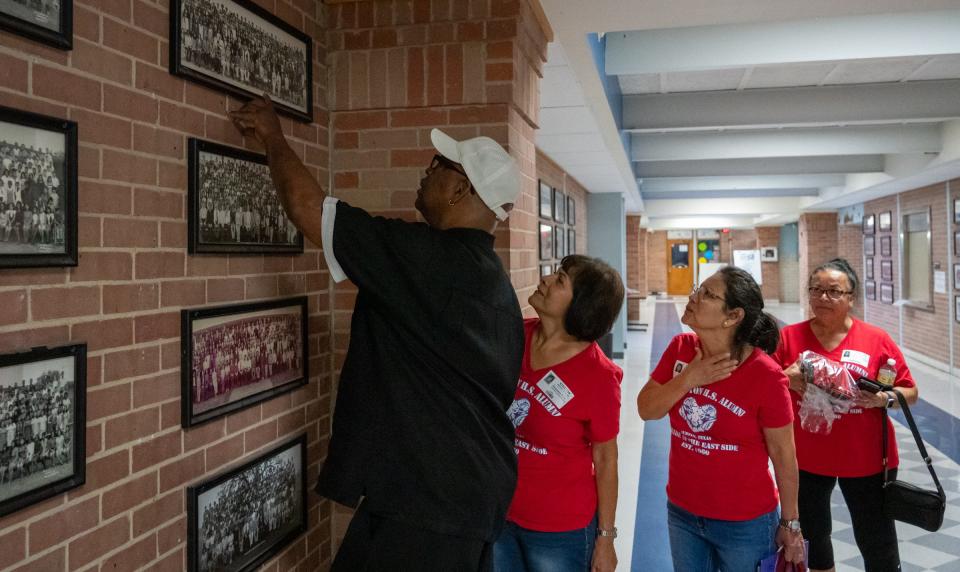
'We did what we did with just natural talent'
I first met the three male Johnston graduates — Brown, Lewis and Rudy Landeros — at Juan in a Million, the venerable Tex-Mex spot on East Cesar Chavez. All three had played football at Johnston. Lewis also had been a talented basketball player who received basketball scholarships and played for Temple Junior College and Tarleton State University.
A few weeks later, I got to know the four women — Barbara Escamilla, Pauline Espinoza Garza, Andrea Fabian Hagan and Sanjuana "Janie" Castro Ruiz — part of the team organizing the 50th reunion, on their old school grounds. There, we met up with their other former classmates, and our guide for this day, dynamic LASA Principal Stacia Crescenzi.
More: 'Best idea I had in my life': 100k gift gets more kids into nature at Victor Emanuel camps
All seven grads grew up in mostly blue-collar neighborhoods that reach from Del Valle and Montopolis to parts of Central East Austin.
Sports was a favored topic for the men. They were especially proud of how well their Rams teams did without the advantages of modern equipment. They reminisced about their star quarterback, Michael Washington, who after graduation led Texas Lutheran College to two national championships.
"It was no Gold's Gym," said Brown, who did much of his weight training off-site during the summer. "I remember a few loose weights and a couple of stationary machines.
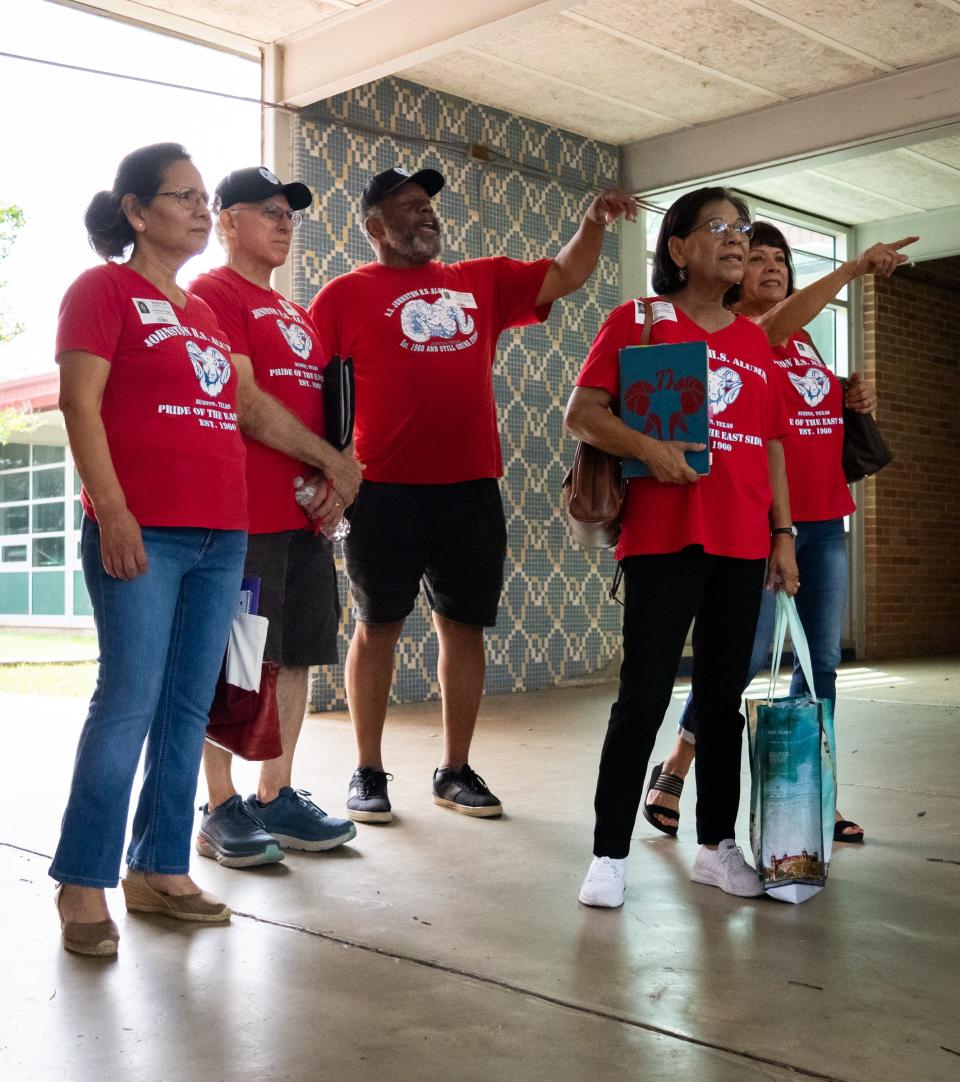
"But we came up in a time when we didn't expect much," continues Brown, who drove 18-wheeler trucks for 46 years. "We did what we did with just natural talent."
The football and basketball teams performed especially well during their four seasons there. Some of the players were drafted into the pros.
"Our senior year in basketball, we lost to Victoria High by one point," said Lewis, who retired from the Austin Fire Department after 20 years of service. "They cheated us. One of our players threw a ball that hit a ref in the head. Two of the players ended up going to jail in Victoria. Johnston High was put on probation, and two of our starters were out. So we placed second in district. We had gone to the state playoffs two years before that."
'My favorite teacher was any librarian'
Teachers in other fields — English, music, history, vocational training — were remembered with affection.
"My favorite teacher was any librarian," said Escamilla, who retired after a career with the IRS. "I couldn't read enough books. I'd also spent time at the Oak Springs Library."
"I liked Mrs. Banik, who taught English," said Ruiz, who retired from a career with the Texas state government. "What was that novel? Oh yes! 'Wuthering Heights!'"
"Mr. Brown made history so fun," said Garza, who retired from the Austin school district. "He had a good sense of humor and knew how to tell a story. He's still on Facebook. I invited him to the reunion."
More: How the Snyder family became leaders in Austin and broke with the city's antisemitic society
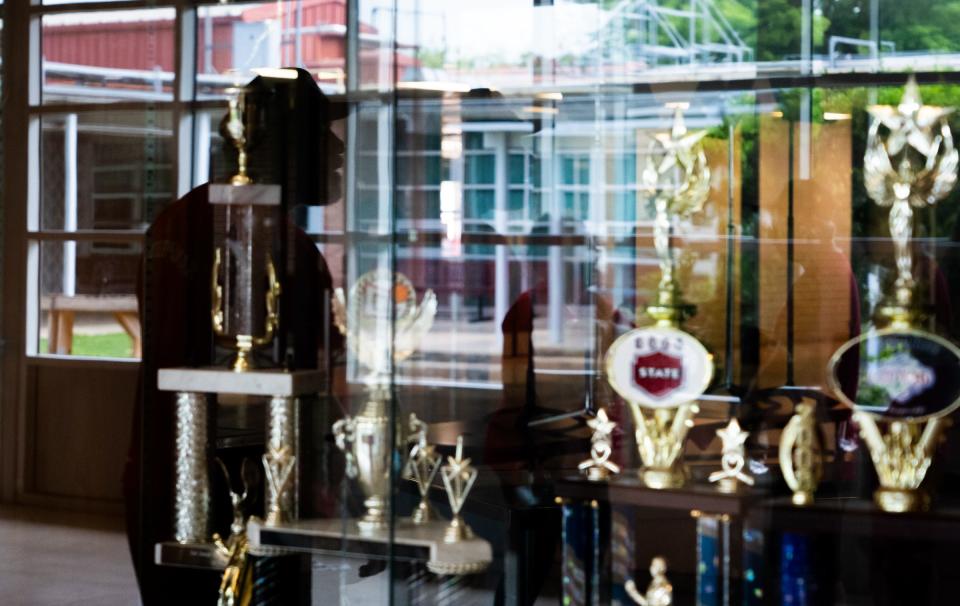
"Mrs. Elder was the typing teacher," said Hagan, who retired from careers with Travis County and the IRS. "I can hear her now: 'Left. Right. Pinky, pinky, pinky.' Always in rhythm. We learned on old-fashioned typewriters. Without these classes, we would not have been able to get a job right after school."
"If I had listened to my English teacher, I wouldn't make so many errors in my writing," jokes Landeros, who retired from the Austin Police Department as assistant chief after 24½ years on the force and eight years with the United Nations. He has written a memoir of growing up in East Austin and the years working as a police officer and as a U.N. adviser in Sierra Leone, West Africa and Afghanistan.
Memories of after-school hangouts remained strong for all seven graduates: Mr. Gatti's Pizza, where Landeros worked, Peter Pan Mini Golf, Sam's BBQ, Downs Field, the historic Black baseball park, Sandy's Old-Fashioned Hamburgers, 12th Street, and a joint called Beacon Point near Riverside Drive and Congress Avenue.
"Definitely Mr. Gatti's," Garza said. "Kerry Pryor sang there. It was the first time I ever had pizza."
Ruiz, Garza, Hagan and Escamilla treasure fond memories of dances, especially at the Montopolis Community Center and at the old City Coliseum, the ribbed arena that was torn down in 2002.
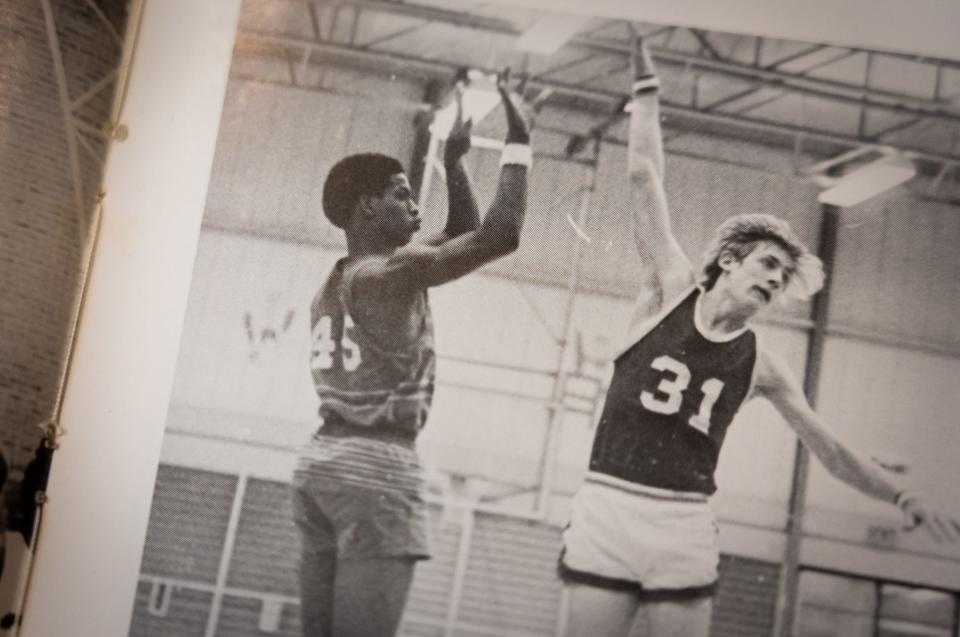
Johnston opened during a time of rapid change in Austin
Even if it didn't always appear so, the 1950s and ‘60s were a time of rapid change in the Austin school district. Whereas Austin had just two public high schools and three junior highs during the 1940s, several big new campuses popped up outside the city center after World War II. Teachers and students shifted from school to school.
In 1958, an extensive campus was planned in East Austin near a bend in the Colorado River. Initially, it was called "Riverside High School." Some incoming students were disgruntled with the informal team nickname, "Riverside Rats," and petitioned the board to find a new school name.
In part because of the upcoming centennial of the Civil War, the board chose to name the school — one specifically planned for Hispanic and African American students in East Austin — after Gen. Albert Sidney Johnston, active in the Texas, U.S. and Confederate armies.
That wasn't all. During the period after the 1954 Brown v. Board of Education decision, which struck down segregation in schools, the Austin district also named two other new schools after Confederates: Sidney Lanier High School in 1961 and John H. Reagan High School in 1965.
More: Ever wanted to learn how to look at art? Austin curator Annette Carlozzi shares her secrets
"It felt to me like 50-50," Lewis said of the ethnic mix at Johnston. "Freshman year, I saw a fight every week. But by sophomore year, the tensions went away."
"We were not a bunch of angels," Brown said with a chuckle. "But we got along."
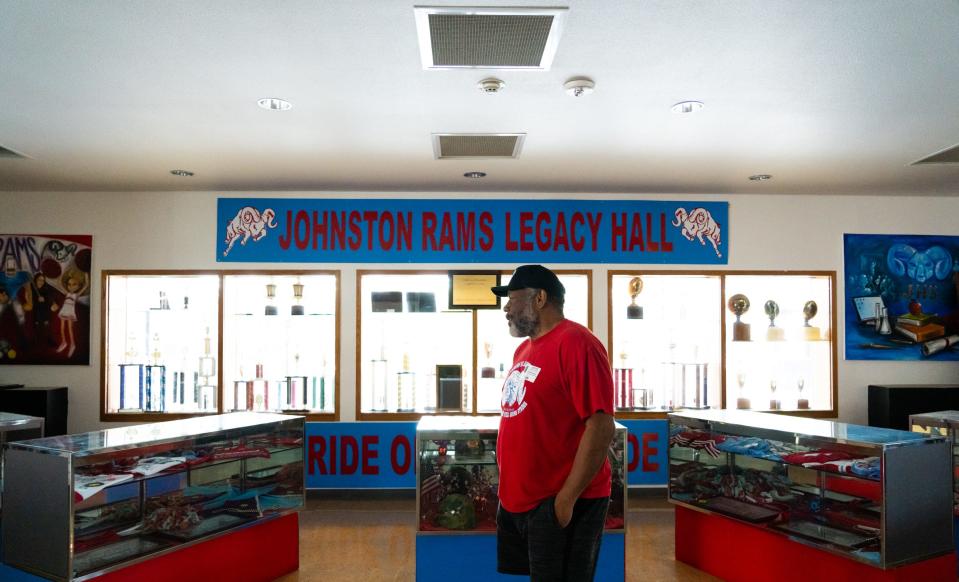
All the Johnston graduates remember the vocational and technical programs, taught under the strict eye of Principal Gordon Bailey. The classes prepared students for fields such as cosmetology, printing, bricklaying, auto mechanics, heavy industry and business.
One of this group of graduates, however, retained a printed list of all the vocational programs offered then in the Austin district, and westside schools provided training in more technically complicated, higher-paying skills.
The families of some Johnston students labored as migrant workers, and those students sometimes did not join classes until November.
"We picked cotton every summer until I was a ninth grader," said Landeros. During the planning for the 50th reunion, he found out that Garza also had picked cotton. "It wasn't until we reconnected with each other that we started realizing how many students were doing the same thing."
When Gordon "Papa" Bailey, principal from 1960 to 1972 and a champion of vocational training, died in 1990, some Johnston alumni petitioned to rename the school after him. Even at his previous gig running Allan Junior High, he was famous for rounding up truants in his own car and repairing the school facilities with his own hands during the summer. Although strict, Bailey was known to comfort any student who needed his help.
His name now graces a middle school in Southwest Austin.
Meanwhile, efforts to desegregate Austin schools, including highly contentious court-ordered busing, created considerable confusion during the first decades at Johnston. Although a judge certified that the district had done all that was required by the mid-1980s, Austin schools tended to resegregate along geographic lines.
Still, the Class of ‘73 remembers mostly the triumphs, as well as the graduates who went on to fame and glory, such as Hollywood actor Julius Tennon, who happens to be married to award-winning actor Viola Davis.
Brown: "A lot of things happened that people didn't expect."
Landeros: "We exceeded expectations."
Brown: "Everyone looked down on us. We didn't think we'd be successful, but we did pretty good."
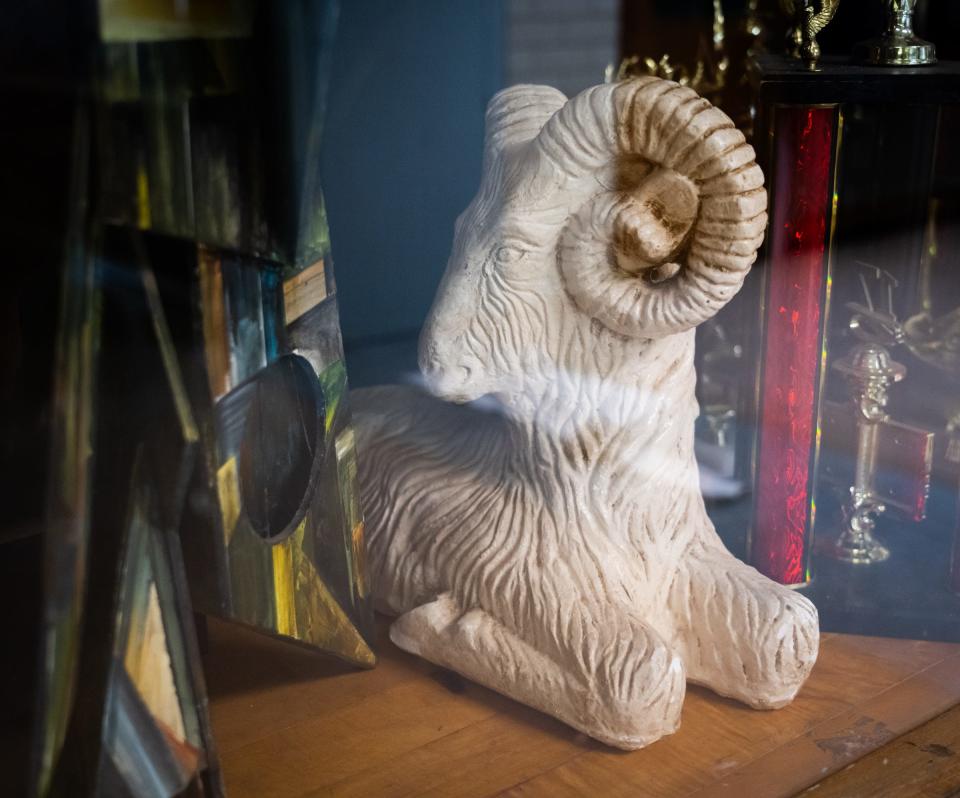
'It was a haven to me': What Johnston High meant to these grads
During our campus tour, the differences among the student experiences popped up repeatedly, but so did the similarities.
"Right here in front of the office," Brown said. "This was our main hangout."
"Not me," Lewis said. "I stayed as far away as possible from the office. I spent my time in the courtyard, the gym and the cafeteria."
"This was the smoking area," Landeros said at another point. "It was as smoky as a nightclub. And there was a phone booth, which was a big deal, and a little student store with school supplies."
Johnston had been outfitted with a "cafetorium," a combined cafeteria and auditorium with a stage, long since removed.
"I'd come in after football practice," Brown said, "and there'd be a play going on."
"I liked the vocational area, which was in the back," Ruiz said. "That's where I met my fiancée."
"For me, it was the cafeteria," Escamilla said. "That's where I met my husband, my sweetheart, the love of my life."
More: Rouse High School student Langston Lee wins national Jimmy Award on Broadway
One thing that hung over their young heads — impossible to ignore — was the Vietnam War. Without college deferments and other advantages available to middle-class youths, Johnston graduates could expect to be drafted more often than not.
Brown: "So many students from Johnston went to Vietnam."
Lewis: "One guy received his diploma and his draft notice on the same day."
Landeros: "I remember one who was a helicopter pilot shot down in Cambodia."
In 2013, a bronze and concrete memorial was unveiled that bears the names of 55 Vietnam veterans who attended Johnston High.
According to an American-Statesman report, this included 19 who died fighting, three others who survived Vietnam but died later while in the military, and 33 who family members say died because of exposure to Agent Orange, a chemical defoliant used during the war.
This day, our group of grads repeatedly expressed their gratitude to LASA Principal Crescenzi for the tour and the access to Johnston High archives. It is clear that LASA leaders respect and preserve the history of the campus.
Over and over, the seven grads talked of what Johnston really meant to them.
"It was like a haven to me," Escamilla said. "We weren't allowed to have friends at home."
"Coming to school, everyone you ran into were friends," Brown said. "It was fun."
"Family life was difficult," Landeros said. "I played football, and the team became a surrogate family. It was a refuge. A sanctuary."
"I loved the social life here," Lewis said. "I could escape from home and be in the gym."
"I'm the sixth child in a family of 15," Garza said. "I had to run home to take care of the little ones until I was old enough to work."
"We had 16 in our family," Hagan said. "I am the 10th child. My older sister, Mary Ann, Class of ‘71, was the first to graduate from high school in our family. School was an opportunity for me to get a job. I just didn't want to work in the fields."
"I loved school," Ruiz said. "I got here very early in the morning to make sure all my homework was done. Johnston was the best thing that ever happened to me."
"We made lifelong friends here," Landeros said, "Most of us had not seen each other in years and when we met up again, we picked up where we left off 50 years ago."
Michael Barnes writes about the people, places, culture and history of Austin and Texas. He can be reached at mbarnes@gannett.com.
This article originally appeared on Austin American-Statesman: Johnston High in Austin was refuge for students from Class of '73

